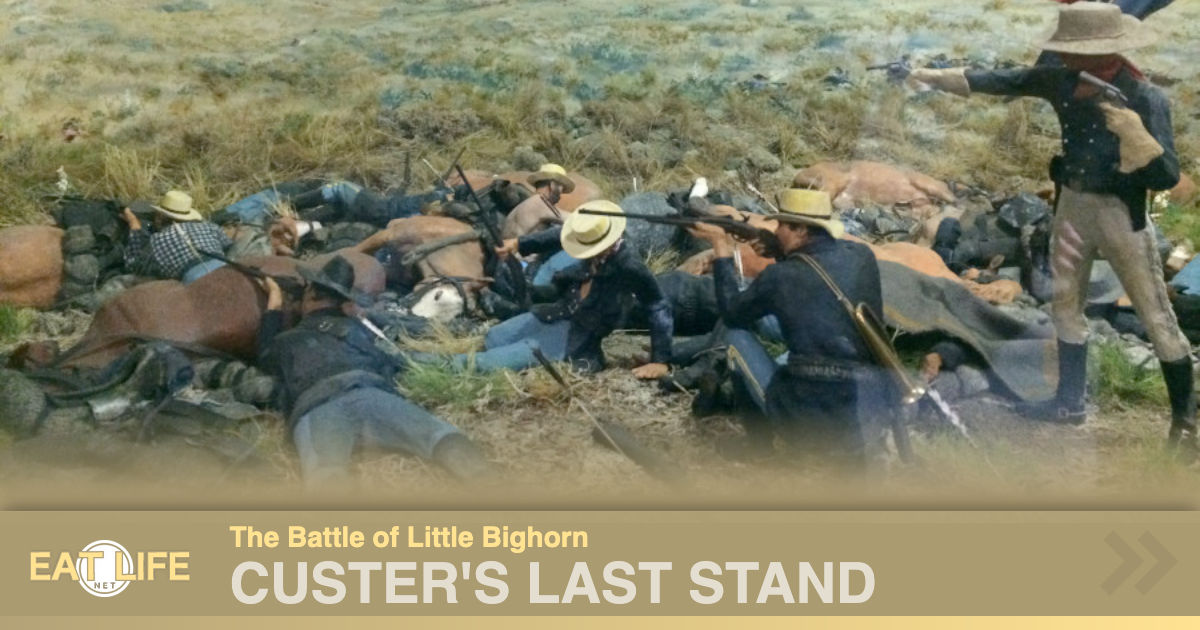Another Broken Treaty:
Gold broke the delicate peace with the Sioux
In 1874, a scientific exploration group led by General George Armstrong Custer discovered gold in the heart of the Black Hills of South Dakota.Prospectors ignore treaty:
When word of the discovery leaked, nothing could stop the masses of prospectors looking to get rich quick, despite the treaty protections that awarded that land to the Sioux.Sioux defend their land: Sitting Bull and Crazy Horse, the local Indian leaders, decided to take up arms to defend their dwindling land supply.
Custer and his soldiers:
Custer was perhaps the most flamboyant and brash officer in the United States Army. He was confident that his technologically superior troops could contain the Native American fighters. Armed with new weapons of destruction such as the rapid-firing Gatling gun, Custer and his soldiers felt that it was only a matter of time before the Indians would surrender and submit to life on a smaller reservation. Custer hoped to make that happen sooner rather than later.
Custer's orders were to locate the Sioux encampment in the Big Horn Mountains of Montana and trap them until reinforcements arrived. But the prideful Custer sought to engage the Sioux on his own.Little Big Horn:
On June 25, 1876, Custer discovered a small Indian village on the banks of the Little Big Horn River. Custer confidently ordered his troops to attack, not realizing that he was confronting the main Sioux and Cheyenne encampment.Seventh Cavalry Massacred:
About three thousand Sioux warriors led by Crazy Horse descended upon Custer's regiment, and within hours the entire Seventh Cavalry and General Custer were massacred.The war wasn't over:
The victory was brief for the warring Sioux. The rest of the United States regulars arrived and chased the Sioux for the next several months. By October, much of the resistance had ended.
Crazy Horse had surrendered, but Sitting Bull and a small band of warriors escaped to Canada. Eventually they returned to the United States and surrendered because of hunger.

Lakota, Cheyenne, and Arapaho warriors surround this position near the climax of the battle. Lt. Col. George Armstrong Custer and approximately 41 men, shoot their horses for breastworks and fight to the death. Custer and several soldiers were found at the crest of the hill while others were discovered along the slope. This was the famed "Last Stand" of legend.

Shot himself with last bullet?
George Flanders was a soldier in a group arriving in Black Hills on June 26, 1876, a day after Custer's charge. Flanders buried his comrades that day and, years later, he heard an account of Custer's battlefield actions. In a Federal Writers' Project essay, George L. Flanders, he recounted the Cheyenne Indian tale that "Custer had received a wound in the hip and was unable to get up, but continued shooting until he had used all except one of his cartridges and with that last bullet shot himself."https://www.loc.gov/classroom-materials/immigration/native-american/custers-last-stand-aftermath

https://www.google.com/maps/place/Little+Bighorn+Battlefield+National+Monument
Mounting Tensions:
Sitting Bull and Crazy Horse, leaders of the Sioux on the Great Plains, strongly resisted the efforts of the U.S. government to confine their people to Indian reservations.
In 1875, after gold was discovered in South Dakota's Black Hills, the U.S. Army ignored previous treaty agreements and invaded the region.
This betrayal led many Sioux and Cheyenne tribesmen to leave their reservations and join Sitting Bull and Crazy Horse in Montana.
By the late spring of 1876, more than 10,000 Native Americans had gathered in a camp along the Little Bighorn River in defiance of a U.S. War Department order to return to their reservations or risk being attacked.
Several members of George Armstrong Custer's family were also killed at the Battle of the Little Bighorn, including two of his brothers, his brother-in-law and a nephew.
The Battle of the Little Bighorn, also called Custer's Last Stand, marked the most decisive Native American victory and the worst U.S. Army defeat in the long Plains Indian War.
The demise of Custer and his men outraged many white Americans and confirmed their image of the Indians as wild and bloodthirsty. Meanwhile, the U.S. government increased its efforts to subdue the tribes. Within five years, almost all of the Sioux and Cheyenne would be confined to reservations.
https://www.history.com/topics/native-american-history/battle-of-the-little-bighorn

The rank and file of the Frontier Regular Army were men of widely diverse backgrounds.
Few were educated, many were illiterate. Most recruits came from the bottom of the social ladder. Of the men in the 7th, 44% were foreign born.
Total U.S. Born: 417
Total Foreign Born: 368
Total 839
| ORIGINS OF THE 7TH CALVARYMEN 1876: | |
|---|---|
| U.S. BORN: | # |
| California | 1 |
| Connecticut | 8 |
| Deleware | 1 |
| District of Columbia | 3 |
| Georgia | 2 |
| Illinois | 18 |
| Indiana | 22 |
| Iowa | 3 |
| Kansas | 1 |
| Kentucky | 19 |
| Louisiana | 2 |
| Maine | 12 |
| Maryland | 16 |
| Massachusetts | 45 |
| Michigan | 7 |
| Missouri | 12 |
| Now Hampshire | 7 |
| New Jersey | 11 |
| New Mexico | 1 |
| New York | 101 |
| North Carvlina | 4 |
| Ohio | 80 |
| Pennsylvania | 82 |
| Rhode Island | 7 |
| South carolina | 2 |
| Tennessee | 2 |
| Texas | 1 |
| Vermont | 5 |
| Virginia | 5 |
| Washington | 1 |
| West Virginia | 4 |
| Wisconsin | 7 | TOTAL U.S. | 472 |
| FOREIGN BORN: | # |
| "At Sea" | 2 |
| Canada | 15 |
| Denmark | 6 |
| France | 8 |
| Germany | 125 |
| Greece | 1 |
| Hungary | 2 |
| Ireland | 128 |
| Italy | 7 |
| Norway | 3 |
| Poland | 2 |
| Russia | 1 |
| Spain | 1 |
| Sweden | 2 |
| Switzerland | 12 |
| United Kingom | 53 |
| TOTAL FOREIGN | 368 |
| TOTAL | 839 |
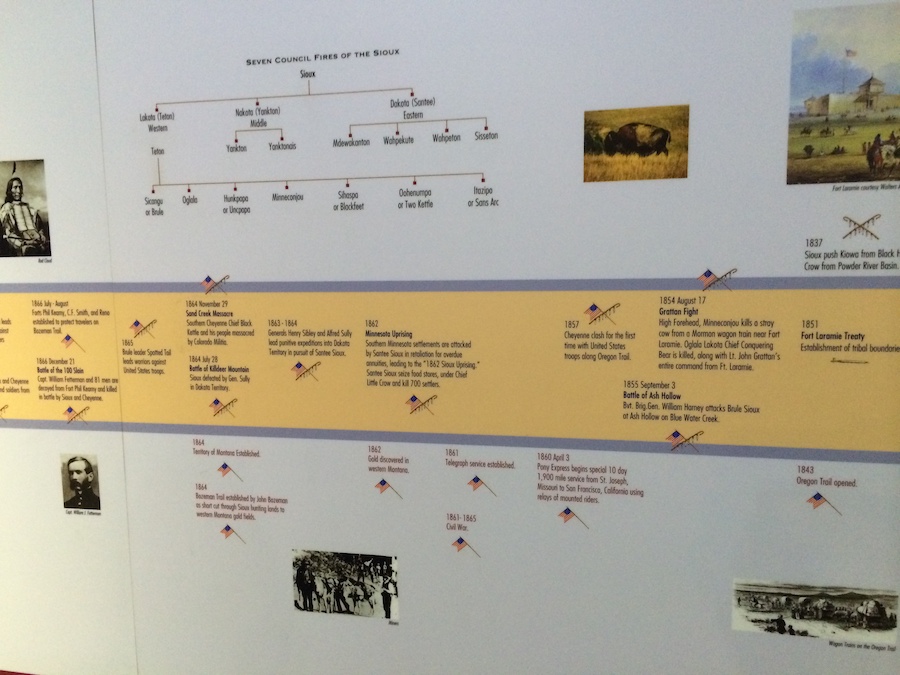
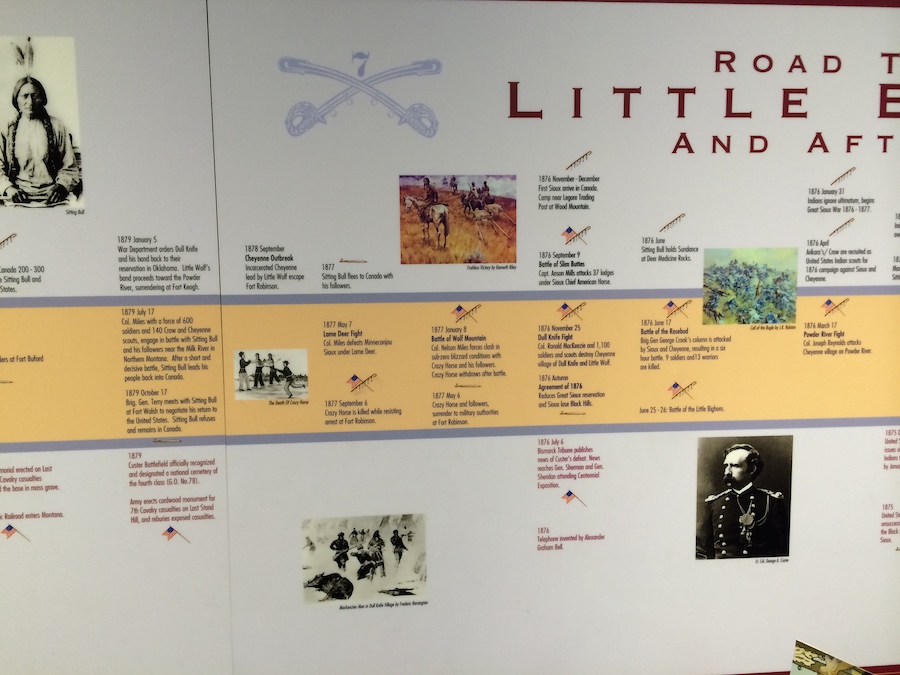
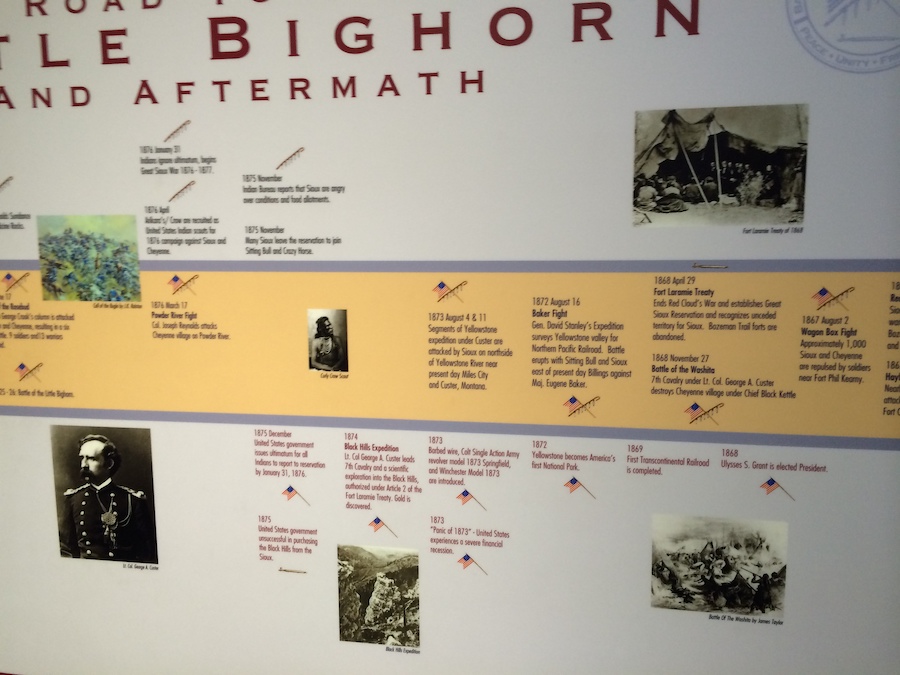
The Battle of the Little Bighorn, was an armed engagement between combined forces of the Lakota Sioux, Northern Cheyenne, and Arapaho tribes and the 7th Cavalry Regiment of the United States Army.Battle of the Little Bighorn:
- Also commonly referred to as Custer's Last Stand
- It was known to the Lakota and other Plains Indians as the Battle of the Greasy Grass
- The battle, which resulted in the defeat of U.S. forces, was the most significant action of the Great Sioux War of 1876
- It took place on June 25–26, 1876 along the Little Bighorn River in the Crow Indian Reservation in southeastern Montana Territory
The fight was an overwhelming victory for the Lakota, Northern Cheyenne, and Arapaho, who were led by several major war leaders, including Crazy Horse and Chief Gall, and had been inspired by the visions of Sitting Bull
- The U.S. 7th Cavalry, a force of 700 men, commanded by Lieutenant Colonel George Armstrong Custer
- Five of the 7th Cavalry's twelve companies were annihilated and Custer was killed, as were two of his brothers, a nephew, and a brother-in-law
The total U.S. casualty count included 268 dead and 55 severely wounded (six died later from their wounds) including four Crow Indian scouts and at least two Arikara Indian scouts
- The Little Bighorn Battlefield National Monument honors those who fought on both sides
https://en.wikipedia.org/wiki/Battle_of_the_Little_Bighorn
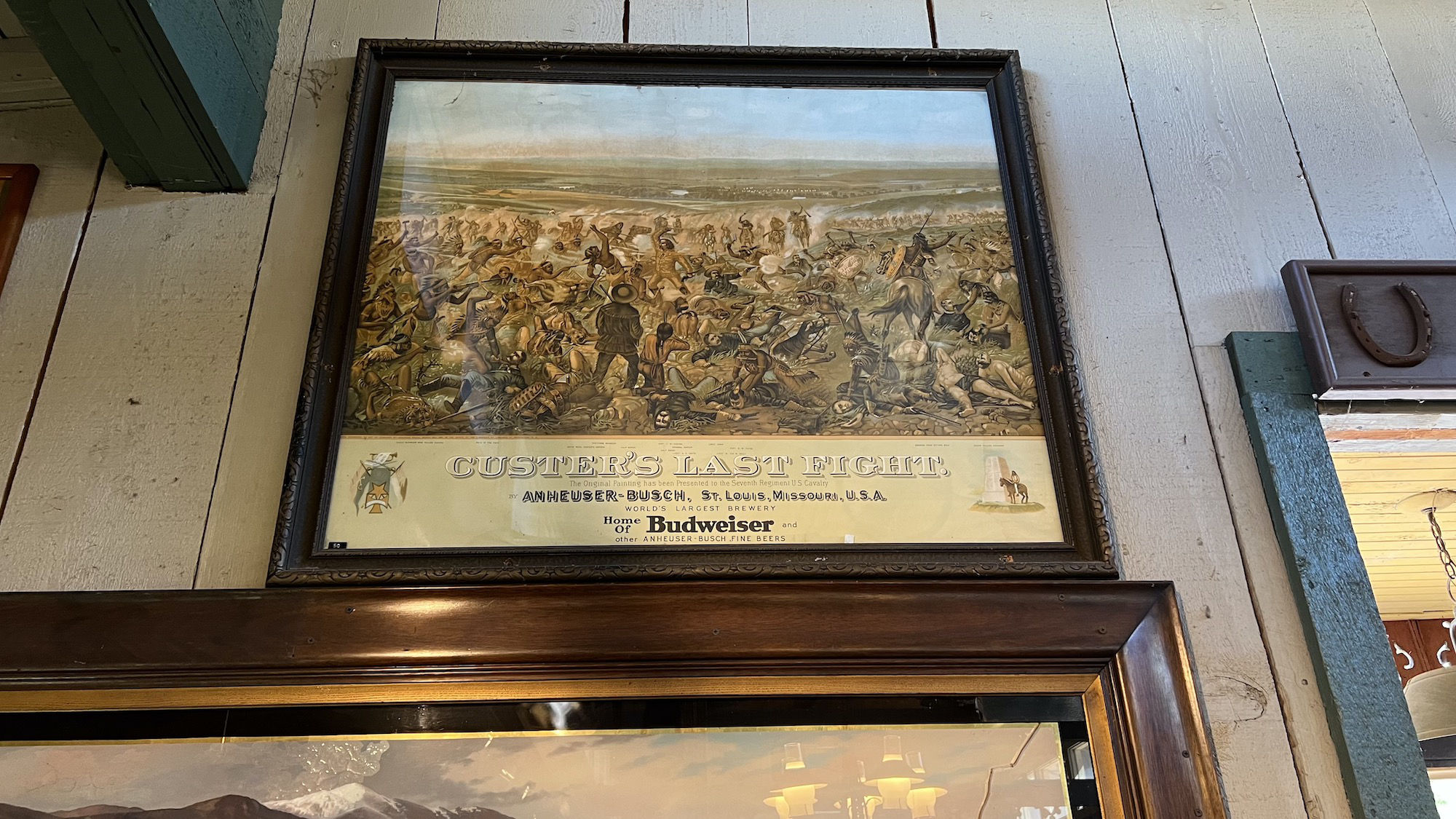
[https://www.eatlife.net/knotts-berry-farm/western-trails-museum.php]






